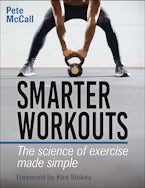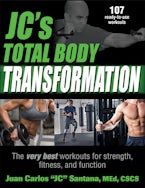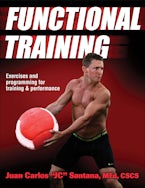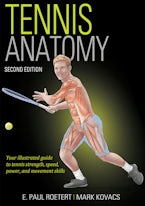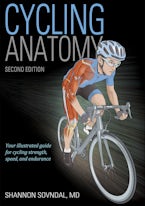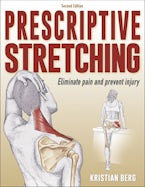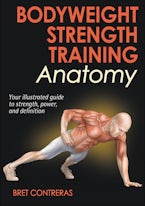
Improve muscular strength and endurance
Solutions for home workouts: how to get started
Pete McCall, C.S.C.S, author of Smarter Workouts, shares tips on at-home workouts and how to get started.
Balancing your workouts
Michelle Maloney, Human Kinetics Senior Acquisitions Editor, discusses:
- How to balance your workouts to address all areas of fitness
- What activities you can use to develop each facet of fitness and resources you can use
- Examples of what a balanced 1-week workout schedule looks like
Examples of sample workouts:
Functional Training with JC Santana
JC Santana, author of Functional Training and JC’s Total Body Workout, demonstrates functional training exercises you can do at home with bands.
You can also check out some exercises from the books below:

Triple threat
The triple threat is a combination of three stability ball exercises in succession, consisting of the stability ball bridge, the stability ball leg curl, and the stability ball hip lift. This protocol keeps constant tension on the hamstrings by requiring the hips to come up and remain off the floor during the entire protocol.

Glute workout with circle band
This program is a glute workout using only a band. This program uses a circle band for all exercises, making it a perfect home workout. This is a great way to add glute training to your existing leg and hip program or to train your hips while you are rehabilitating a knee or back injury and can’t do traditional leg training.

Fabulous Five stability ball exercises
These five stability ball exercises will challenge your total-body stability and strength. Perform as a continuous circuit for 3 to 4 sets and use as a warm-up, cool down, or functional training maintenance program.
Kettlebell workout for fat-loss
Kettlebell training is efficient because it combines the benefits of strength training, anaerobic and aerobic cardiorespiratory training, and flexibility and mobility all in one.
Try this kettlebell workout for beginner fat-loss from Kettlebell Training. The video demonstrates the main exercises in the program but the full program can be found below.
Warm-Up:
- Around-the-body pass: 30 seconds each direction
- Halo: 30 seconds each direction
- Kettlebell deadlift: 10 reps
- Goblet squat: 10 reps
- Joint mobility exercises: Rotate all major joints 10-20 times
Main Session:
- Single swing
- Single press
For both exercisess perform for 20 seconds with 10 seconds rest before alternating arms. Perform 4 sets with 1 min rest for recovery between sets.
Cool Down:
- Easy jog for 10 min
- Stretch for 5 min: 30 sec each side for each stretch

Kettlebell workout for weight loss: 6 full body moves
Kettlebells have been used in fitness for a number of years, especially for weight loss. We’ve put together a kettlebell workout for weight loss.
Most of us are familiar with kettlebell workouts. A lot of people enjoy working out with this piece of equipment because it offers a full body workout. It also blends strength, power, endurance, flexibility and mobility. It’s also a great way of burning fat. In this post, adapted from Steve Cotter’s Kettlebell Training, we’ll give you some excellent kettlebell exercises for weight loss.
Strengthen your shoulders, core and torso
You don’t HAVE to be a tennis player to benefit from the torso, lower body, core, shoulders, back, chest, arms, and wrists exercises found in Tennis Anatomy.

Lower body, core, shoulders, back, chest, arms, and wrists exercises 
The Russian twist, Pallof press, crunch, and toe touch exercises
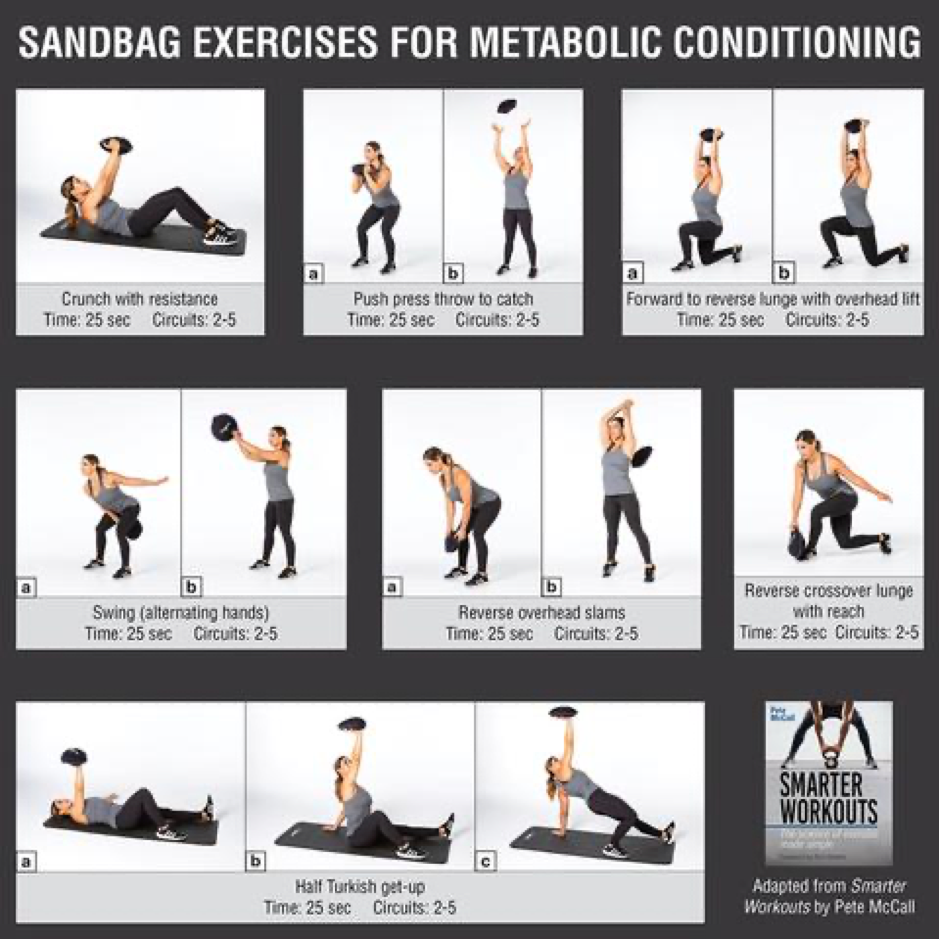
Have a go at sandbag exercises for metabolic conditioning
Like a medicine ball, a sandbag helps improve the strength of both muscle and elastic connective tissues because you can move a sandbag in multiple directions as opposed to moving in only a single, linear path of motion. Additional benefits of sandbags include a pliable surface that helps develop grip strength and, unlike medicine balls, it won’t roll away from you when you set it down. Select a weight that is approximately 5 to 7 percent of your body weight when starting this circuit. As you get stronger, you can gradually progress to ones that weigh 10 to 15 percent of your body weight. Your goal is to complete AMRAP during the work interval. As you feel yourself getting stronger, keep track of the number of reps you do during your first time through the circuit, and then try to meet or beat that number each additional time you do the exercise.
Dumbbell workouts
Check out our dumbbell workouts page which includes a 4 week programme – all you need is a pair of dumbbells!


How to design a program for maximal hypertrophy
Selecting the appropriate exercises is an important factor for maximizing whole-body muscle hypertrophy. For example, certain muscles have multiple attachments that improve leverage for movement patterns. Moreover, myofibers often are subdivided into neuromuscular compartments, each of which is innervated by its own nerve branch. Functionally independent muscle segments facilitate the central nervous system’s ability to fine-tune human movement for optimum efficiency during complex motor tasks. Importantly, these inter- and intramuscular architectural variances reinforce the need to adopt a multiplanar, multiangled approach to hypertrophy-oriented training using a variety of exercises.
Maximal hypertrophy can be achieved only by systematically varying the exercise performed and fully working all aspects of the targeted musculature. We explore how to employ these strategies to maximize hypertrophy in various major muscle groups.
Bodyweight circuits
Check out these lower and upper bodyweight circuits from Bodyweight Strength Training Anatomy which can be done without use of any equipment.

This lower body circuit targets the back, glutes, and legs 
This upper body circuit targets the arms, shoulder, chest, and upper back

Strengthen Arms, Shoulders, Core, and Neck to boost your ride
Improve your cycling strength, speed, and endurance with the exercises in Cycling Anatomy by Shannon Sovndal.
Stretch away back pain
Prescriptive Stretching offers ready-to-use stretching sequences to target specific problems such as back or neck pain, runner’s knee, tennis elbow, stiff shoulders, and more.

Mobility workout for feet, hips, spine, and shoulders
Experience the benefits of mobilizing the fascia network and improve functional mobility of the ankle/foot, hip, spine, and shoulders with this workout from Myofascial Training by Ester Albini.
Books featured
JC’s Total Body Transformation
The very best workouts for strength, fitness, and function
£20.99
9781492572763



